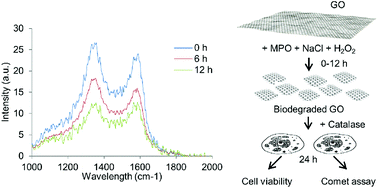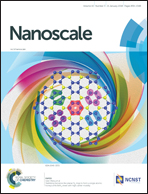Graphene oxide is degraded by neutrophils and the degradation products are non-genotoxic†
Abstract
Neutrophils were previously shown to digest oxidized carbon nanotubes through a myeloperoxidase (MPO)-dependent mechanism, and graphene oxide (GO) was found to undergo degradation when incubated with purified MPO, but there are no studies to date showing degradation of GO by neutrophils. Here we produced endotoxin-free GO by a modified Hummers’ method and asked whether primary human neutrophils stimulated to produce neutrophil extracellular traps or activated to undergo degranulation are capable of digesting GO. Biodegradation was assessed using a range of techniques including Raman spectroscopy, transmission electron microscopy, atomic force microscopy, and mass spectrometry. GO sheets of differing lateral dimensions were effectively degraded by neutrophils. As the degradation products could have toxicological implications, we also evaluated the impact of degraded GO on the bronchial epithelial cell line BEAS-2B. MPO-degraded GO was found to be non-cytotoxic and did not elicit any DNA damage. Taken together, these studies have shown that neutrophils can digest GO and that the biodegraded GO is non-toxic for human lung cells.

- This article is part of the themed collections: Graphene Turns 15: Bio-implications and Bio-applications and International Year of the Periodic Table : Low Dimensional Carbon Systems


 Please wait while we load your content...
Please wait while we load your content...